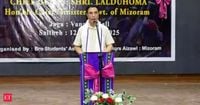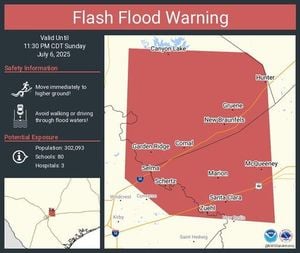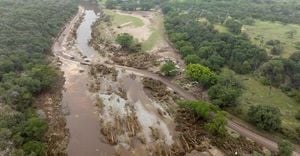Shillong, April 24: Meghalaya is positioning itself to become the IT and digital services hub of Northeast India, focusing not only on the service sector but also on harnessing cutting-edge technologies for its own development. As part of this ambitious goal, the state plans to utilize robotics and artificial intelligence (AI) in farming, implement augmented and virtual reality technologies in tourism, and adopt blockchain technology for various applications.
During the inauguration of a two-day workshop on Emerging Technologies at the State Convention Centre in Shillong, Chief Minister Conrad K Sangma outlined the roadmap for these technological interventions. He emphasized the transformative power of technology in governance, stating, "Technology holds a special place for me—it must drive positive change and solve real issues to be truly impactful in governance and the private sector." Sangma pointed to the success of Meghalaya's e-Proposal and digital file movement systems as examples of effective technological integration.
In a significant move towards enhancing transparency and efficiency, Sangma announced that Meghalaya will soon implement a blockchain-based employee data and promotion tracking system, starting with the police department. This initiative aims to reduce delays and improve transparency in recruitment and career progression across government departments.
Additionally, the state has made remarkable strides in reducing maternal mortality by nearly 50% through technology, which has been used to track and support high-risk pregnancies. Sangma also revealed plans to install Internet of Things (IoT) sensors across the state's 70,000 water springs to gather real-time data for better water resource management.
Drawing inspiration from a recent study visit to Japan, the Chief Minister discussed innovative farming models that utilize robotics and AI in greenhouse farming, particularly for crops like strawberries and lettuce. He expressed the state's intent to replicate these technologies to boost agricultural productivity.
Moreover, the integration of augmented and virtual reality technologies is set to enhance Meghalaya's tourism sector, creating immersive digital experiences that showcase the state's rich cultural and natural heritage.
The workshop, which includes technical sessions on artificial intelligence, blockchain, cybersecurity, user experience in governance, and public digital infrastructure, aims to deepen understanding of technology's role in shaping future-ready governance. This aligns with the state government's 'Digital Meghalaya' vision and national missions such as Digital India and IndiaAI.
Chief Secretary D.P. Wahlang highlighted the establishment of the state government's Drone Technology Lab, which is currently utilized for high-resolution mapping in sectors such as mining, forestry, and tourism. He also noted the integration of virtual reality in legal education at the National Law University in Shillong, showcasing the diverse applications of technology in various fields.
Furthermore, the upcoming integration of the Khasi and Garo languages into the AI-powered Bhashini app aims to enhance local language accessibility, ensuring that technological advancements benefit all communities.
Nand Kumaram, President and CEO of NeGD, joined the workshop virtually and emphasized the need for a shift from pilot projects to scalable, product-oriented technology solutions. He encouraged departments to adopt a product mindset, implement procurement reforms, build capacity across teams, and incentivize learning within government organizations. Kumaram also underscored the importance of collaboration with startups and educational institutions, citing successful models from Rajasthan and national initiatives like the Bhashini platform and AI Mission.
Meanwhile, in Mizoram, Chief Minister Lalduhoma chaired the first meeting of the Northeast Economic Corridor task force on the same day, April 24, 2025. This initiative, under the Ministry of DoNER, aims to enhance connectivity, trade, and economic growth in the Northeastern Region (NER) of India.
The Northeast Economic Corridor focuses on improving intra-regional connectivity through the development of ports, road networks, airports, railways, digital infrastructure, and power facilities. It also promotes major sectoral clusters such as sericulture, agarwood, bamboo, rubber, tea, and agriculture, including high-value crops like kiwi and pineapple.
Lalduhoma highlighted the significance of the Northeast region in India's economic development and stressed the need for enhanced regional cooperation with other Asian countries to ensure faster and more inclusive growth. The establishment of the High-Level Task Force on the Northeast Economic Corridor is aimed at assessing the existing economic, infrastructure, and investment ecosystem in the NER.
In a related development, the Brahmaputra Board, established in 1982 under the Brahmaputra Board Act, 1980, is mandated to undertake the integrated development of the Brahmaputra and Barak River basins, particularly in the Northeastern region. The Board's responsibilities include preparing master plans for flood management and bank erosion control, as well as coordinating among states for sustainable water resource management.
During a meeting with the Brahmaputra Board, Singh emphasized the importance of cooperation in areas related to increasing water sources, watershed development, rainwater harvesting, and multi-purpose irrigation projects. He outlined plans to accelerate critical projects and interventions in the coming months to ensure a safer and more sustainable riverine system in the state.
As both Meghalaya and Mizoram embark on these transformative journeys, the focus remains on leveraging technology and regional cooperation to drive economic growth and improve the quality of life for residents in the Northeastern states of India.




